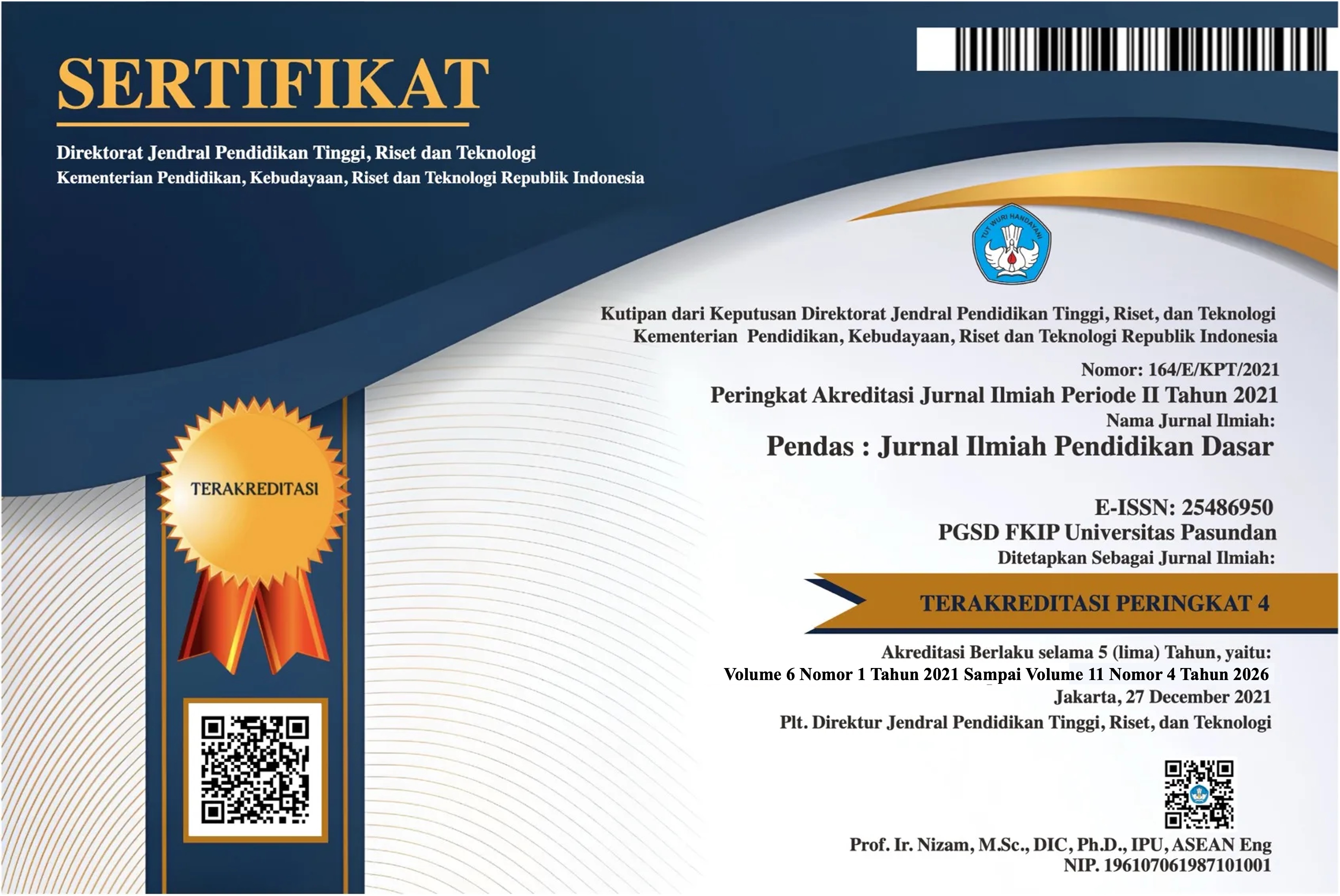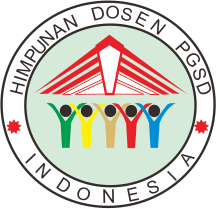PENGEMBANGAN MEDIA PEMBELAJARAN KOMIK DIGITAL DENGAN PENDEKATAN GREEN EDUCATION UNTUK MENINGKATKAN KEMAMPUAN PEMAHAMAN KONSEP MATEMATIS PESERTA DIDIK KELAS VII SMP
DOI:
https://doi.org/10.23969/jp.v10i2.26451Keywords:
mathematical concepts understanding, digital comic, green educationAbstract
This study is motivated by students’ difficulties in deeply understanding mathematical concepts, as indicated by a dominant procedural thinking pattern. This difficulty is reflected in students struggling to comprehend prerequisite materials, connect concepts with real-life contexts, restate concepts, distinguish examples from non-examples, and apply algorithms in problem-solving, along with limited relevance to daily life. The current learning approach does not emphasize meaningful conceptual understanding related to green education, nor has it incorporated innovative media such as digital comics in the learning process. This study aims to examine the development process, attractiveness, and effectiveness of digital comic media based on the Green Education approach in improving students’ mathematical conceptual understanding. The research employs the Research and Development (R&D) method using the 4D development model (Define, Design, Develop, and Disseminate). The results show that the digital comic media received an average feasibility score of 3.58 from media validation experts and 3.56 from content validation experts, both categorized as “Feasible.” Attractiveness testing on a small scale yielded a score of 3.35 and on a large scale 3.45, both classified as “Very Attractive.” Effectiveness evaluation using the Gain Index test resulted in a score of 0.67, categorized as “Moderate,” while the N-Gain score percentage was 67%, categorized as “Fairly Effective.
Downloads
References
Baroody, Arthur, & C. (2024). Does Use Of A Hypothetical learning progression promote learning of the cardinal-count concept and give-n performance? The Journal Of Mathematical Behavior, 76, 4. https://doi.org/https://10.1016/j.jmathb.2024.101178
Defiana Ayu Putri, Bambang Sri Anggoro, dan D. D. P. (2024). Riset Keterhubungan: Bagaimana Self Confidence dan Resiliensi Matematis Mempengaruhi Penalaran dan Kecerdasan Numerik Siswa. Kognitif: Jurnal Riset HOTS Pendidikan Matematika, 4(3), 1174–1189. https://doi.org/https://doi.org/10.51574/kognitif.v4i3.2066
Farida, F., Khoirunnisa, Y., & Putra, R. W. Y. (2018). Pengembangan Bahan Ajar Gamifikasi Pada Materi Bangun Ruang Sisi Lengkung. Jurnal Penelitian Dan Pembelajaran Matematika, 11(2), 193–204. https://doi.org/10.30870/jppm.v11i2.3765
Hake, R. R. (1998). Interactive-engagement versus traditional methods: A six-thousand-student survey of mechanics test data for introductory physics courses. American Journal of Physics, 66(1), 64–74. https://doi.org/10.1119/1.18809
Hanifah, K., & Rosyida, F. A. (2024). Implementasi Empat Pilar Pendidikan UNESCO dalam Penerapan Kurikulum Merdeka di MIS Muhammadiyah 4 Jetis Ponorogo. 5(2), 174–195. https://doi.org/10.55380/tarbawi.v5i2.838.
Heris Hendriana, Tri Johanto, U. S. (2018). The Role Of Problem-Based Learning To Improve Student’s Mathematical Problem-Splving Ability And Self Confidence. Mosharafa: Jurnal Pendidikan Matematika, 9, no. 2, 512–526. https://doi.org/https://ejournal.unsri.ac.id/index.php/jme/article/view/5394
M. Rusdi. (2018). Penelitian Desain dan Pengembangan Kependidikan (Konsep, Prosedur, dan Sintesis Pengetahuan BARU) (1st ed.). Depok: PT Raja Grafindo Persada.
Mohler L, J. (2001). Using interactive multimedia technologies to improve student understadning of spartially-dependent engineering concepts. GraphiCon’2001, (1987), 292–300.
Nurdyansyah, & Fahyuni, E. F. (2016). Inovasi Model Pembelajaran. In Nizmania Learning Center.
Nuryati, N., Sri Anggoro, B., & Wahyu Yunian Putra, R. (2021). Pengembangan Bahan Ajar Elektronik Bilangan Bulat Dan Pecahan Berbasis Alqurun Teaching Model. AL KHAWARIZMI: Jurnal Pendidikan Matematika, 1(1), 50–59. https://doi.org/10.46368/kjpm.v1i1.293
Rahmatullah, D., Suryani, E., Fatmawati, Merdekawati, A., & Yahya, F. (2020). Pengembangan Media Pembelajaran Komik Digital Pada Materi Kerjasama Ekonomi Internasional Mata Pelajaran Ekonomi Kelas XI Mipa Sma Negeri 1 Plampang Tahun Pelajaran 2019/2020. Indonesian Journal of Teacher Education, 1(4), 179–186.
Ridia, N. S., & Afriansyah, E. A. (2019). Perbandingan Kemampuan Pemahaman Matematis Siswa melalui Auditory Intellectualy Repetition dan Student Teams Achievement Division. Mosharafa: Jurnal Pendidikan Matematika, 8(3), 515–526. https://doi.org/10.31980/mosharafa.v8i3.586
Rittle-Johnson, B., Siegler, R. S., & Alibali, M. W. (2001). Developing conceptual understanding and procedural skill in mathematics: An iterative process. Journal of Educational Psychology, 93(2), 346–362. https://doi.org/10.1037/0022-0663.93.2.346
Sabila Putri Pernama, Desty Rarizka, T. R. (2020). Pengaruh Green Education dalam meningkatkan jiwa Green Enterpreunership pada siswa sekolah dasar. Journal GEEJ, 7(2), 233–242.
Santosa, F. H., Bahri, S., Negara, H. R. P., & Ahmad, A. (2022). Kemampuan pemahaman konsep berdasarkan self-efficacy matematis dan gender dalam situasi problem-based learning. Journal of Didactic Mathematics, 3(3), 120–129. https://doi.org/10.34007/jdm.v3i3.1620
Sausan, T., Wibowo, M. U., Soekarno, J., & Cimencrang, H. (2024). Analisis Kemampuan Literasi Matematis Peserta Didik Sekolah Menengah dalam Menyelesaikan Soal PISA Konten Quantity Ditinjau dari Math Anxiety. Jurnal Agama Sosial, Dan Humanora, I(1), 18–33. https://doi.org/https://ejournal.uinsgd.ac.id
Sukarelawan, M. I., Indratno, T. K., & Ayu, S. M. (2024). N-Gain vs Stacking.
Vioreza, N., Hilyati, W., & Lasminingsih, M. (2023). Education for Sustainable Development: Bagaimana Urgensi Dan Peluang Penerapannya Pada Kurikulum Merdeka? EUREKA: Journal of Educational Research and Practice, 1(1), 34–47. Retrieved from https://doi.org/10.56773/eureka.v1i1.
Downloads
Published
Issue
Section
License
Copyright (c) 2025 Pendas : Jurnal Ilmiah Pendidikan Dasar

This work is licensed under a Creative Commons Attribution 4.0 International License.



















